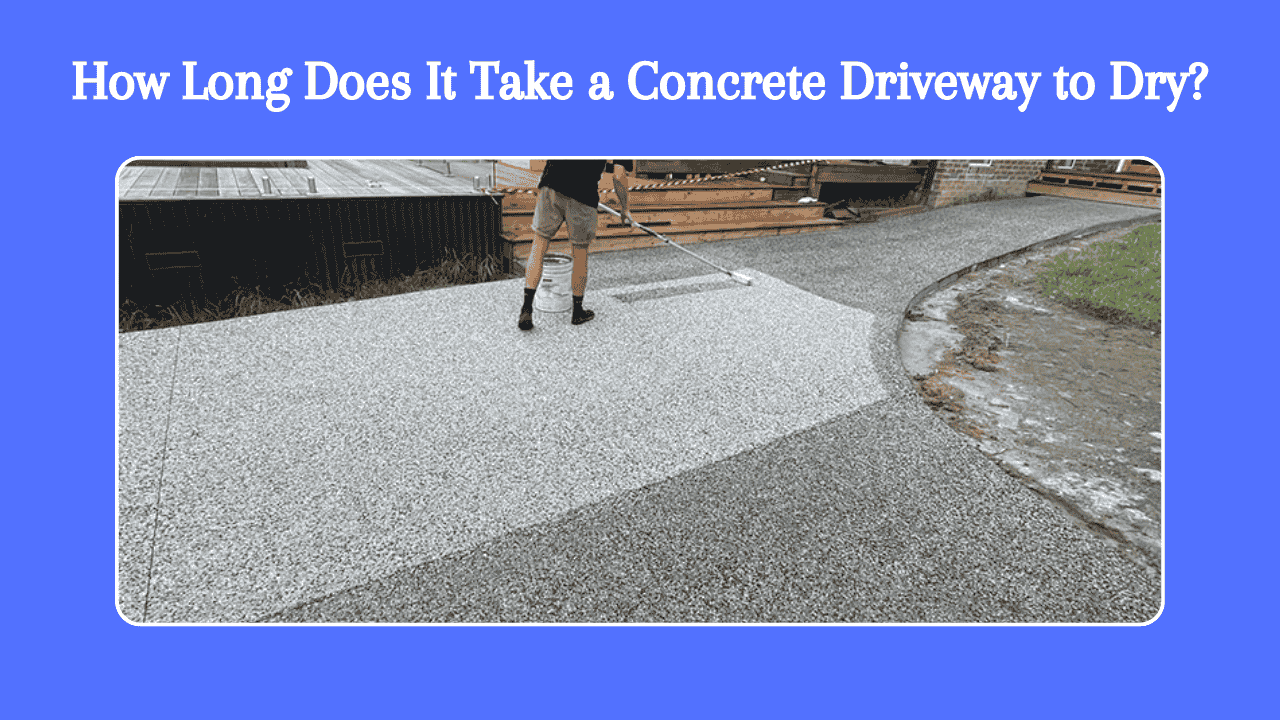A concrete driveway typically takes 24 to 48 hours to dry enough for light foot traffic. For full curing and to handle vehicle weight, it requires 28 days of curing time. This distinction between drying and curing is critical for the longevity and durability of your driveway. Proper care during the curing process ensures your driveway can withstand regular wear without cracking or crumbling.
Table: Concrete Driveway Drying and Curing Facts
| Aspect | Details |
|---|---|
| Initial Drying Time | 24–48 hours for light foot traffic |
| Curing Period | 28 days for full strength |
| Ideal Conditions | Moderate temperature (50–70°F), low humidity |
| Foot Traffic | After 24 hours |
| Vehicle Use | After 7–10 days for light vehicles; full curing after 28 days |
| Sealing Timeline | Recommended after 28 days when concrete is fully cured |
| Reference | Affordable Concrete San Antonio |
What Affects Concrete Driveway Drying Times?
Several factors influence the drying and curing times of a concrete driveway:
- Weather Conditions:
- Drying is faster in warm, dry climates and slower in cold, damp environments.
- Concrete Mix:
- The ratio of water to cement affects drying time. Higher water content extends the drying process.
- Thickness of the Slab:
- Thicker slabs retain more moisture and take longer to dry.
- Surface Protection:
- Covering the surface with plastic sheeting or curing blankets helps control evaporation.
Concrete Curing vs. Drying: Why It Matters
- Drying: Refers to the evaporation of surface water, making the driveway appear dry to the touch. This occurs within 24–48 hours.
- Curing: A chemical process where the concrete gains its full strength. This requires a consistent supply of moisture over 28 days.
Ignoring proper curing can lead to cracks, reduced strength, and premature wear.
Tips to Speed Up Concrete Driveway Drying
- Use a Low-Water Mix:
- Opt for a mix with less water to reduce drying time.
- Apply a Curing Compound:
- Sealants or curing agents help retain moisture for consistent curing.
- Control the Environment:
- Use fans or dehumidifiers in enclosed areas to speed up drying.
Can You Walk on a Concrete Driveway Too Soon?
Walking on a freshly poured driveway before the initial 24-hour drying period can leave imprints and weaken the surface. Always allow adequate time for the surface to harden to avoid permanent damage.
Common Myths About Concrete Driveway Drying Times
- Myth: “Concrete dries completely in a few days.”
- Fact: While it may appear dry, concrete takes 28 days to fully cure.
- Myth: “You can park on it after a week.”
- Fact: Light vehicles may be okay after 7 days, but heavy use should wait 28 days.
- Myth: “Adding water helps with curing.”
- Fact: Excess water weakens the concrete mix and prolongs drying time.
Sealing Your Concrete Driveway
Sealing is essential after the curing process to protect your driveway from stains, moisture, and damage. Wait at least 28 days to allow the concrete to fully cure before applying a sealant.
How to Test If Your Concrete Driveway Is Ready for Use
- Hardness Test:
- Tap the surface lightly with a hammer. A solid sound indicates proper curing.
- Moisture Test:
- Tape a small plastic sheet to the surface. If condensation forms underneath after 24 hours, the concrete still contains moisture.
Final Thoughts on Concrete Driveway Drying
Patience is crucial when dealing with concrete. Following recommended drying and curing times ensures a durable, long-lasting driveway. Proper maintenance, including sealing, will protect your investment for years to come. If you are looking for an affordable concrete driveway company in San Antonio, contact us.


